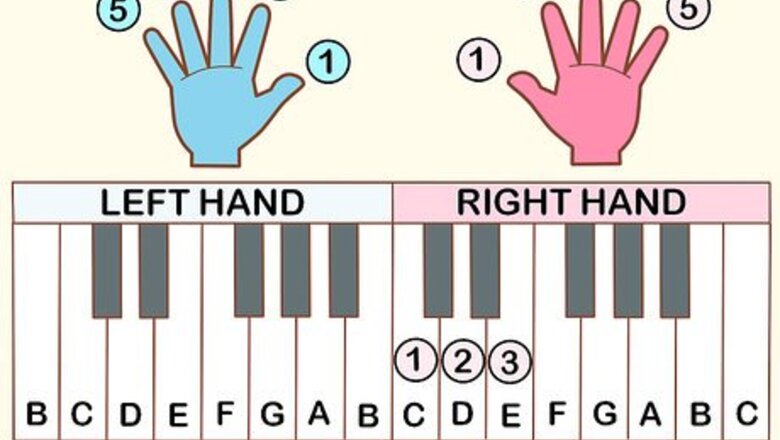
views
X
Research source
Playing in C Major
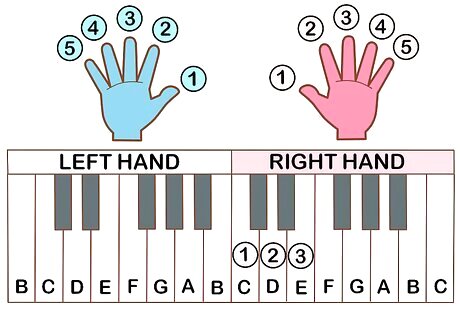
Place the thumb and first 2 of your right hand in C position. To play "Mary Had a Little Lamb" in C major, use the white key that is middle C (in the middle of the keyboard), and the 2 keys to the right of it. These are D and E. In C position, you can play the first 5 notes of the C major scale: C D E F G. Your thumb will be on middle C, while your pinky plays G. For the basic melody in C major, these are the only notes you'll use. The entire song can be played with just these 3 keys – although you can get more complicated with it once you have the basic melody down.
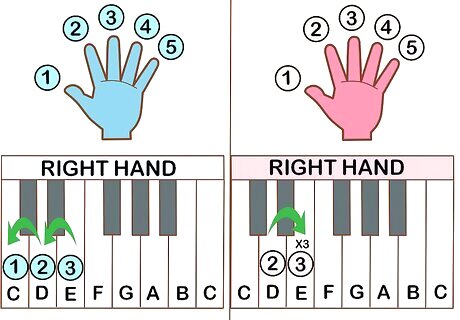
Play E D C D E E E. These notes make up the first line of the song. As you play, sing along the lyrics "Mary had a little lamb." There is 1 note for each syllable. These notes are also the third line of the song, so once you know this line, you already know half the first verse. While this song can easily be played with just a single finger, practice using all 3 fingers so you can get used to it. If you want to add chords or attempt to play more complex arrangements later, you'll need this skill.
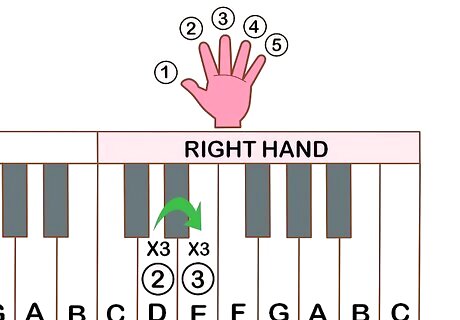
Move on to the second line by playing D D D E E E. The second line of the song is "little lamb, little lamb," and just uses the last 2 notes you played for the first line, each repeated 3 times. For an alternate version, you can also play D D D E G G, using your pinky to play the G key. After you've played the second line, add the third line, which you already know (because it's the same as the first line).
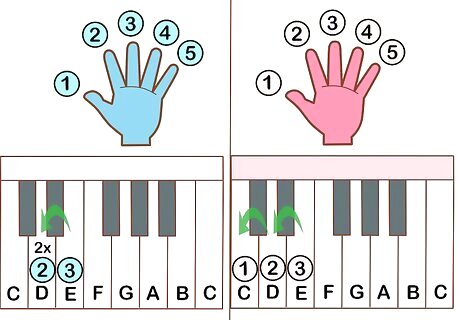
Play E D D E D C for the last line of the verse. The lyrics for the last line of the song are "its fleece was white as snow." As with the other lines, you'll play one note for each syllable of each word of the lyrics. Once you've gotten down the last line, try to play all 4 lines together without stopping: E D C D E E E / D D D E E E / E D C D E E E / E D D E D C. You can now play "Mary Had a Little Lamb."
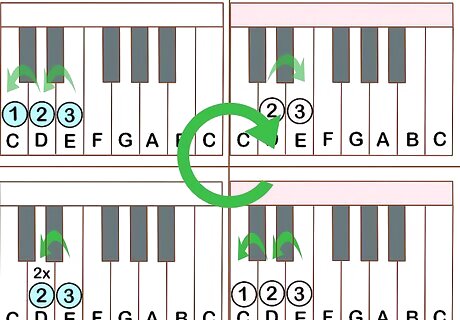
Repeat the same melody for subsequent verses. Of course, there is more than one verse in the song "Mary Had a Little Lamb." However, all of the verses use the exact same notes with no deviation. Once you've learned the first verse, you can play the whole song. There are 4 verses in the song. You can find the full lyrics at https://allnurseryrhymes.com/mary-had-a-little-lamb/ if you don't already know them. The song "Mary Had a Little Lamb" is based on a true story of a 14-year-old American girl who took her pet lamb to school with her one day in the late 1700s.
Harmonizing the Melody
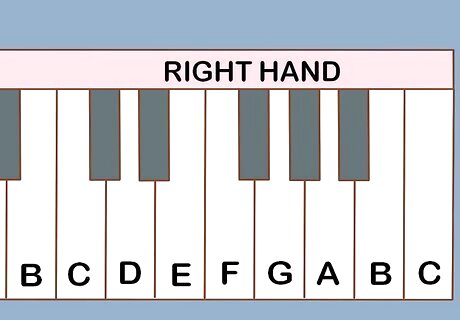
Identify harmonizing chords for each note. In every major scale on the piano, each note has a corresponding harmonizing chord. The chord starts with the root note (the single note you would play in the melody). Then add 2 notes above that note, playing every other key. For example, the harmonizing chord for C is the C major chord, formed using the notes C, E, and G. If you're teaching piano to a small child, this is a perfect opportunity to introduce some music theory into your lesson in a practical, hands-on way they will likely pick up relatively quickly.
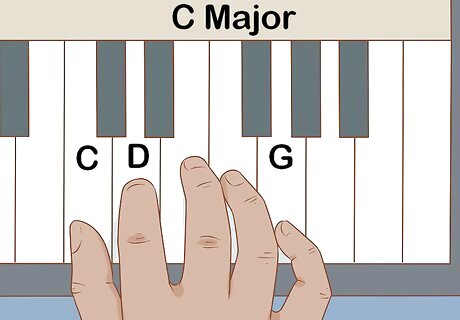
Make your hands into a chord shape. To play chords rather than single notes, you'll simply move your hand up and down the keyboard, playing 3 notes at a time instead of just a single note. Keep your hands in the same position while playing. Start with C major, so that you don't have to use any black keys. You may need to practice before you can smoothly harmonize the melody in other scales that require you to play black keys as well. Keep your wrists loose and your fingers lightly curved into the same shape. Your fingers shouldn't be too stiff or clawed.
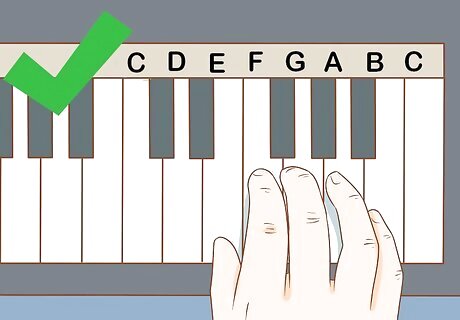
Move your whole hand as you play the melody. To play a harmonized melody, you simply play the harmonized chord instead of the single note. When playing this way, your thumb will always be on the root note of the chord – the original single note you would play in the melody. When you're just getting started, you may want to try playing the entire melody using just your thumb (but without engaging the other fingers). This will get you used to moving your hand up and down the keyboard as you play the melody. EXPERT TIP Cuong Nguyen Cuong Nguyen Music Teacher Cuong Nguyen is a Music Teacher and the Co-Owner of both OC Musica and the Huntington Beach School of Music. He has been teaching music for over 45 years and has extensive knowledge in music teaching pedagogy. He and his team of over 20 professional instructors specialize in teaching piano, voice, guitar, violin, brass, and woodwind instruments. Cuong is the 1984 winner of the Yoshiro Irino Memorial Prize in Composition. He received his Bachelor of Music with Honors from the Victoria University of Wellington, New Zealand. Cuong Nguyen Cuong Nguyen Music Teacher Enjoyable practicing fosters improvement. Practicing shouldn't feel like a chore — it should be fun! Treat it like playing songs you already know and love. You need to have the right mindset. It's not just about what you play but also how you think about the music. Make practicing enjoyable.
Trying Variations of the Same Tune
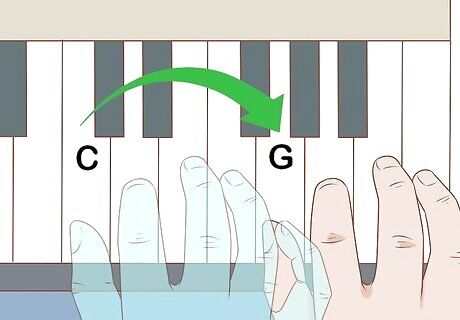
Shift your hand to play the song in G major. If you want to play "Mary Had a Little Lamb," all you have to do is slide your hand up the keyboard until your thumb is resting on the G key (where your pinky finger was when you were in C position). While technically have to use black keys to play in G major, they aren't necessary for the basic melody. As long as you're playing the basic melody of the song, use the same pattern you used when you played it in C major.

Use F sharp when playing the song in D major. Move your hand so that your thumb is on the D to play D major. When you play the first 5 notes of the D major scale, you will use F sharp rather than F – the black key to the right of F. Play those 5 notes a few times until you're accustomed to using the black key. Since the pattern starts with your middle finger, the first note of the melody is F sharp. From there, you simply follow the same fingering pattern. Writing down the names the notes as you switch keys can help you learn to transpose songs into different keys.
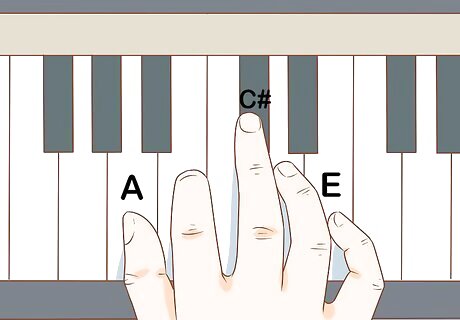
Try playing the melody in A major. Just as in the other keys, move your thumb to the A key. Your 4 fingers play the rest of the first 5 notes of the A major scale. One of those notes is C sharp, the black key to the right of middle C. As with D major, since the pattern starts with your middle finger, the song starts on the black key. Otherwise, the song follows the same fingering pattern as when you played it in C major.
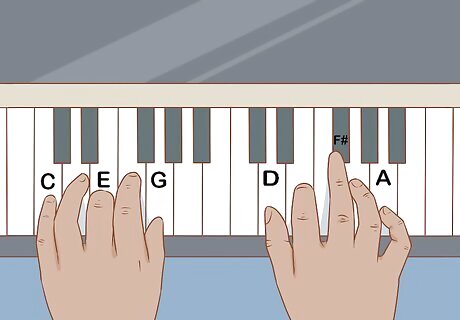
Accompany the melody with left hand chords. Use harmonizing chords with your left hand to add depth to the song by playing the harmonizing chord while you're playing the melody with your right hand. When playing in C major, alternate between the C major and the G major chord. To play the G major chord, move your hand 4 keys (or steps) down from the C major chord. Then you just move your hand back and forth as you play the song. On sheet music, you would see the chord written above the letter. For a song like "Mary Had a Little Lamb," you would traditionally play the harmonizing chord with the first note of each bar. Add chords where you want to emphasize the notes, and omit the chord for softer parts of the song that you want to play more subtly. Going from the lyrics, you would add a harmonizing chord on the capitalized syllables: "MAR-y had a LIT-tle lamb, LIT-tle lamb, LIT-tle lamb, MAR-y had a little lamb, its FLEECE was white as SNOW."
















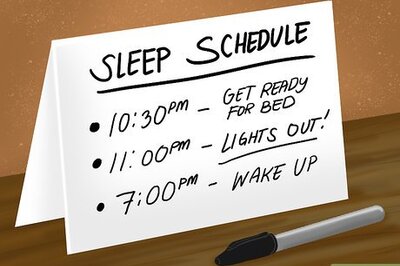
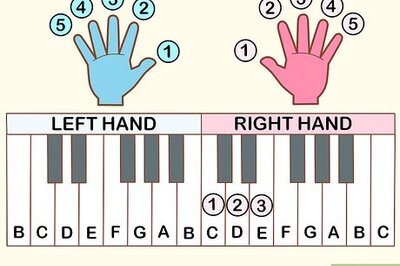


Comments
0 comment